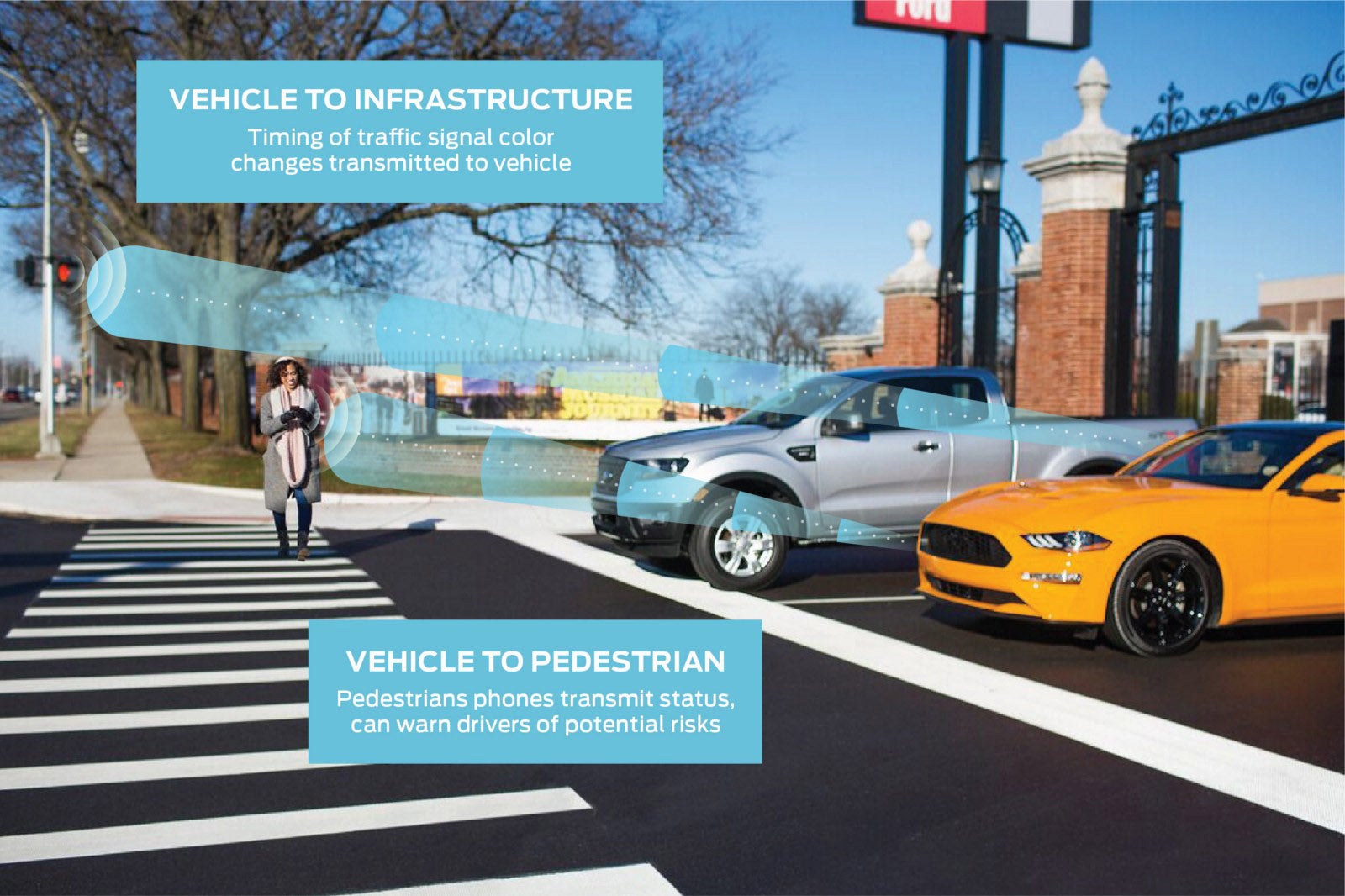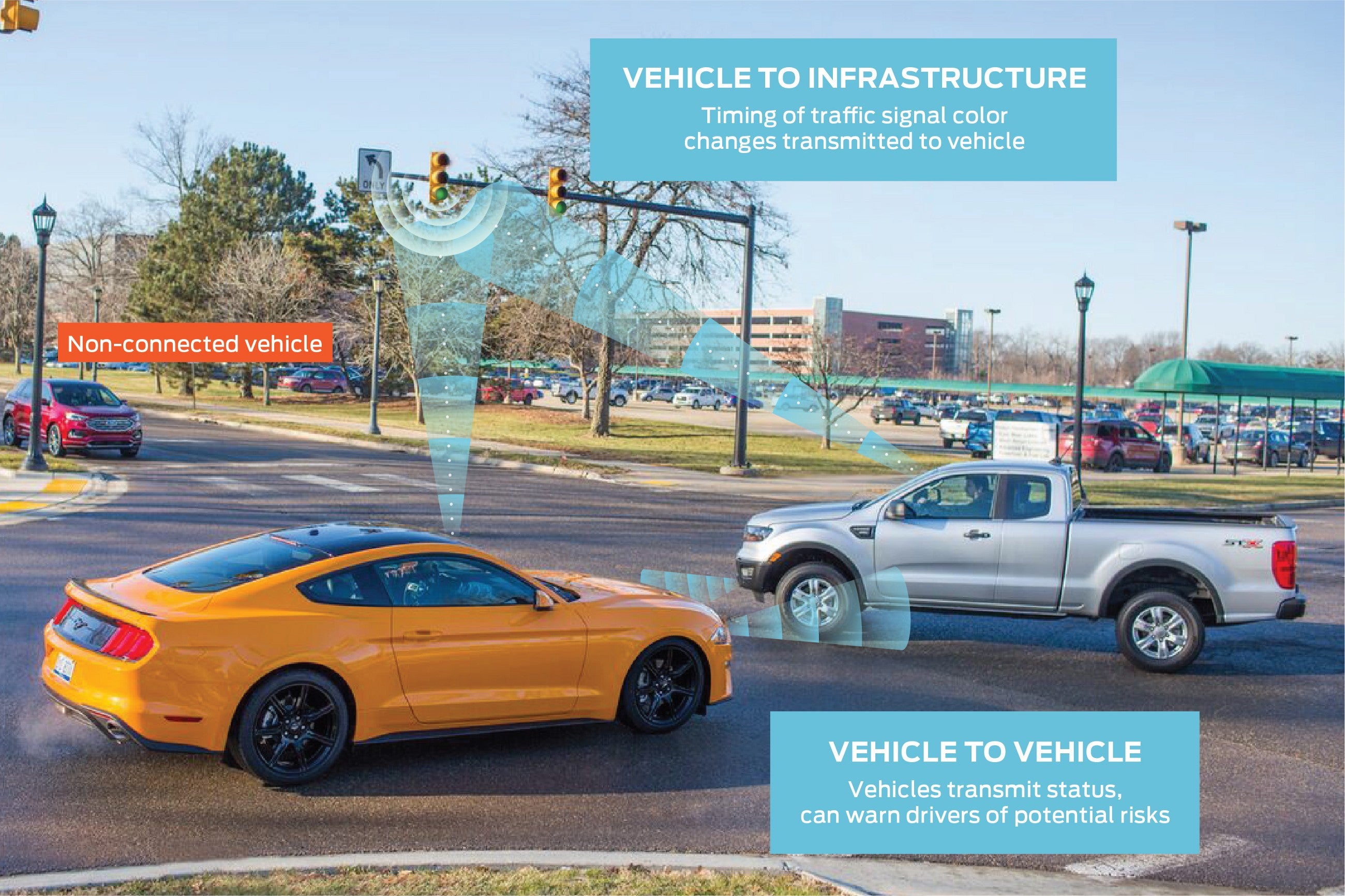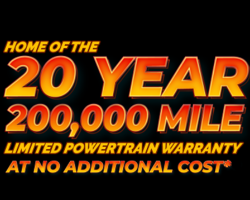Ford commits to C-V2X beginning in 2022
Paving the way to the future of safety, all new vehicles will have cellular vehicle-to-everything technology

There’s no question that a commitment to safety is at top of mind for every automaker, Ford included. But while other automakers continue to concentrate on how to make their vehicles safer, Ford Motor Company is looking ahead at the bigger picture of building a safer world. At January’s Consumer Electronics Show (CES) 2019, Ford announced on the world’s stage its commitment to have cellular vehicle-to-everything (C-V2X) technology in all new models beginning in 2022.
What is C-V2X?
C-V2X is a wireless technology standardized in 2017 that allows vehicles to communicate not just with each other, but with everything (and everyone) around them. Simply put, it will be the glue that binds all similarly equipped vehicles, cities, infrastructure, and even pedestrians around it together.
While C-V2X is being implemented concurrently with the rapidly-growing 5G cellular network, it does not need a cell tower to quickly send and receive information. This enables vehicles and other devices with the technology to communicate directly with each other, essentially cutting out the “middle man,” and allowing the quickest real-time information exchange possible.
Types of C-V2X and safety scenarios
V2V (vehicle-to-vehicle) communication
In the simplest of situations, vehicles at a four-way stop will be able to autonomously coordinate who has the right-of-way and “goes first.” Sure, that’s something humans can generally figure out, but imagine a collision around the corner of a busy city, or up ahead on the road and out of view. A car with C-V2X would be able to relay its status to other cars, which will detect the accident, alerting the driver and/or even making driving adjustments if the driver isn’t able to quickly enough.
Emergency vehicles outfitted with C-V2X would be able to send signals to other vehicles long before approaching, so that the vehicles, driven by a human or autonomous, will be able to clear the way.
V2P (vehicle-to-pedestrian) communication
Pedestrians and cyclists aren’t always seen easily by drivers. This technology quite literally allows vehicles to see around corners to avoid pedestrians and other obstacles. Picture a person on a bike suddenly riding in front of traffic. Before the cyclist even comes into your view, your C-V2X-equipped vehicle would pick up the signal from the cyclist’s cell phone and stop the car automatically, ensuring no collision. C-V2X will work with Ford’s Co-Pilot360™, the advanced suite of driver-assist and safety features that are already standard across all of our new passenger cars, SUVs, and trucks.
V2I (vehicle-to-infrastructure) communication
C-V2X will not be limited to just other vehicles and to smartphones. Remember, it stands for “cellular vehicle-to-everything.” As more and more cities start to adopt the technology, traffic lights will be able to send signals to vehicles about when they’re going to change colors. Road signs will be able to communicate to the vehicle information about speed changes, congestion up ahead, or even construction, advising it to maneuver in a safe manner, and possibly even suggest alternative routes to avoid such situations. The potential capabilities for C-V2X are endless.

C-V2X is not science fiction.
We know this all seems very far-fetched. And you’re absolutely right in thinking that in order to get a more universal safety benefit from C-V2X, it would require having as many vehicles equipped with the technology as possible. But studies have indicated that it could have a positive impact on safety and congestion with as few as 10% of the vehicles on the road equipped.
Yes, it will take time for all of this to happen. No, Rome wasn’t built in a day, but we’re closer to making a completely-connected, technology-neutral environment than you would expect.
Ford has been working on a pilot program for C-V2X with Qualcomm Technologies — a key chipset technology supplier — in collaboration with German automaker Audi, Italian motorcycle maker Ducati, Panasonic, and the Colorado Department of Transportation to get this (ahem) rolling since fall of 2018.
In addition, a company that provides intelligent transportation infrastructure, Applied Information, asserted at CES 2019 that its LTE C-V2X products are already deployed in more than 500 U.S. cities, counties, school districts, and states. The company provides cellular connections to traffic signals, school zone beacons, traffic control device, emergency vehicles, and more. Applied Information alone has already deployed its current C-V2X technology in more than 10,000 devices, and there are other companies that do the same.
A C-V2X future is a reality, and Ford is leading the way.
As a part of Ford’s commitment to creating a safer world through C-V2X, it is currently working with multiple industry and government organizations to make this goal happen sooner than later. They are openly inviting and encouraging other automakers, infrastructure and road operators, government agencies, and technology companies to collaborate. With Audi and Ducati already on board and a pilot program currently underway, it won’t be long before the others follow.
Deploying C-V2X in all of Ford’s vehicles starting in 2022 is a very realistic and achievable timeline. This kind of forward, “out-of-the-cab thinking” is what propelled Henry Ford to revolutionize the automotive industry over 115 years ago, and is what continues to make Ford Motor Company the leader in all of transportation today.
We at Benna Ford are proud to be part of the Ford family at such an exciting time in history, and are looking forward to bringing C-V2X technology and safety to the community here in Rio Grande Valley within the next few years, if not sooner. We’re always happy to talk about Ford’s leading technology, so stop in and take a look at some of our latest models like the 2019 Ford Fusion, Fiesta, or Mustang to see what’s new and even take a test drive. We look forward to seeing you!







